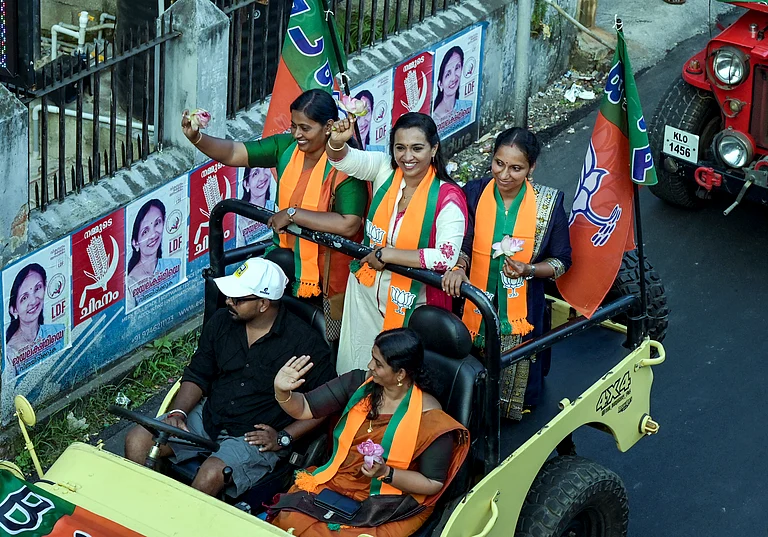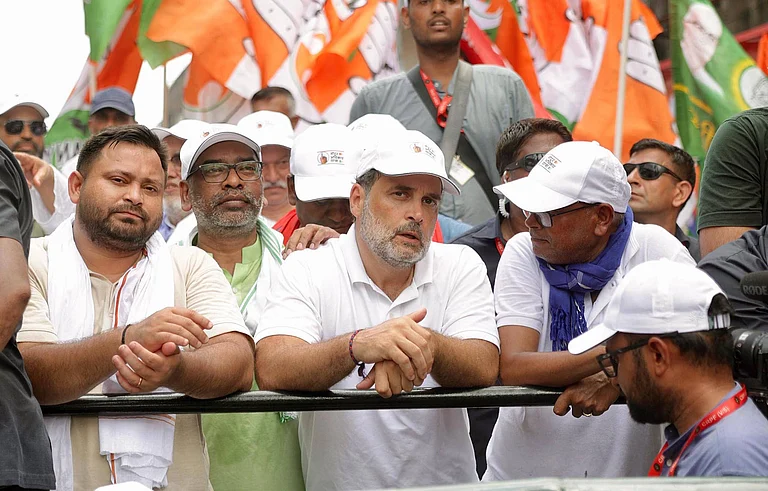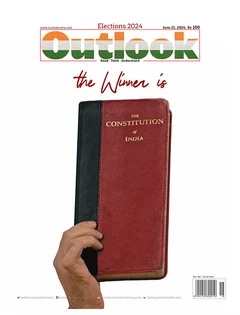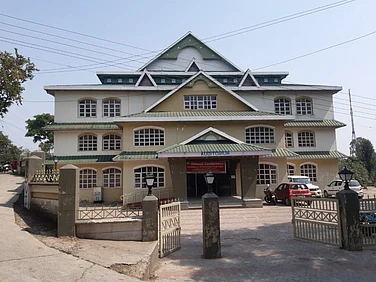The Bharatiya Janata Party (BJP) along with its two regional allies won 11 of the 14 parliamentary constituencies in Assam in the 2024 Lok Sabha elections. The BJP retained its 2019 tally of nine seats, its allies—the Asom Gana Parishad (AGP) and the United People’s Party Liberal (UPPL)—won two seats. The vote percentage of the BJP increased from 36.05 per cent in 2019 to 37.43 per cent in 2024. The National Democratic Alliance (NDA) secured 46.32 per cent votes, compared to 46.76 per cent in 2019. Interestingly, the Congress, which won in three constituencies, secured 37.48 per cent votes, which is slightly higher than the BJP.
The Congress worked for opposition unity, but in a few constituencies that unity did not work. The most striking dimension of the Congress alliance was the non-partnership with the All India United Democratic Front (AIUDF) with whom the Congress allied in the 2021 assembly elections. The alliance helped the AIUDF to register a formidable victory of 16 assembly seats in 2021. What is significant is the defeat of Badruddin Ajmal, the chief of the AIUDF, in Dhubri constituency from where he has served three consecutive terms. He was defeated by the Congress candidate, Rakibul Hussain, by a margin of more than 10 lakh votes, the highest victory margin in the country. Chief Minister Himanta Biswa Sarma has claimed that with the defeat of the AIUDF, and the transfer of the party’s vote to the Congress, the later has become a complete Muslim party in the state.
The BJP adopted many strategies for electoral consolidation; the most important one was the delimitation exercise. The boundaries of the assembly and Parliamentary constituencies were re-drawn in August 2023 with the avowed objective of protecting the interests of the indigenous people. The target was the Bengali Muslim community, whose growing political assertions were projected as a threat to the interests of the indigenous people.
Sarma asserted that the exercise would ensure dominance of ‘Assamese people’ in 102 assembly segments. The AIUDF, the party that primarily represents the Bengali Muslim community, apprehended that the exercise will reduce the number of Muslim majority constituencies from 29 to 22. The Karimganj parliamentary constituency in the Barak valley, which was earlier reserved for the Scheduled Castes (SCs), was de-reserved in favour of the Silchar parliamentary constituency in the valley.
The BJP adopted many strategies for electoral consolidation; the most important one was the delimitation exercise.
The other strategies adopted by the BJP were the development initiatives, particularly the infrastructure projects in different districts of the state; expanding the beneficiary coverage; anti-minority rhetoric; and, demographic consolidation. Assam had never seen anything like the much-publicised and advertised ‘Bikash Yatra’ in the past. For more than a month till the model code of conduct came into effect, the Assam government launched the Bikash Yatra. It inaugurated and laid down foundation stones of large infrastructure projects throughout the state. The projects included roads, flyovers, hospitals, model residential schools and stadiums costing crores of rupees. For example, on March 4, 2024, infrastructure projects worth of Rs 1,208 crore were inaugurated and foundation stones were laid in the Kamrup and Kamrup (Metro) districts. The chief minister and his cabinet colleagues travelled throughout the state for these initiatives. Front page newspaper advertisements were carried on an everyday basis. The ‘Mission Basundhara’, a scheme launched in 2021 with the supposed objective of granting land rights to the indigenous people of Assam, was hugely advertised in the run up to the elections.
The government also launched and expanded a number of beneficiary schemes primarily targeting the rural poor, women and the youth. Orunodoi, a Direct Benefit Transfer (DBT) scheme and an ambitious one, has a coverage of 30 lakh households with a monthly grant of Rs 1,250. The Mukhyamantri Mahila Udyamita Abhiyaan, which has an assured benefit of Rs 47,500 comprising a grant of Rs 10,000, government bank loan of Rs 25,000 and capital subsidy of Rs 12,500, has benefitted close to 40 lakh women entrepreneurs all across the state. Mukhya Mantri Nijut Moina scheme assures financial grants as admission incentive to 10 lakh girl students to continue their education to higher secondary, graduation and post-graduation studies. Many more such beneficiary schemes have also been launched by the government.
The vote percentage of the BJP increased from 36.05 per cent in 2019 to 37.43 per cent in 2024. Interestingly, the Congress secured 37.48 per cent votes, which is slightly higher than the BJP.
The narrative of communal polarisation took an intense turn in the run up to the elections. The minority Bengali Muslim community that constitutes around 30 per cent of the total population in the state remained the prime target. Eviction drives in Garukhuti in the Mangaldoi districts in September 2021 created a hue and cry after the death of two civilians in police firing. The drive continued in other parts of the state too. In December 2022, another eviction drive was launched to clear around 1,200 bighas of land in the birthplace of Sankardeva in Nagaon district of Assam. On May 15, 2024, while campaigning in Jharkhand, Sarma claimed that 1.25 crore Bangladeshis have ‘infiltrated’ Assam. After the election results were declared, the chief minister asserted that the Muslims had voted on the basis of religion alone and lamented that the development initiatives had no impact on them in deciding their votes.
The government also resorted to hyper nationalism. The largest performance of Bihu, a folk dance representing Assam’s valiant culture, comprising more than 11,000 dancers was organised in the Guwahati that earned the Guinness World Records certificate on April 14, 2023. The event was also graced by Prime Minister Narendra Modi. The 400th birth anniversary of Lachit Borphukan, the national hero of Assam who defeated the mighty Mughals in 1671 in the famous Saraighat Battle, was organised in Delhi with a lot enthusiasm in November 2022. Around 42 lakh essays were written on Lachit which also earned a place in the Guinness Book of World Records. Modi also unveiled a 125-foot bronze statue of ‘Ahom general’ Lachit Borphukan on March 9, 2024 in Jorhat.
The BJP targeted specific communities to increase its vote bank. Apart from the Bengali Hindus and the Hindi-speaking population, who are the traditional supporters of the party, the BJP-led government launched a number of schemes for the tribal tea garden community. This community constitutes around 20 per cent of the total population. It has a substantive presence both in upper Assam and Barak Valley. Through its politics of ‘rainbow alliance’, the BJP co-opted the tribal communities into its fold. It also initiated a number of schemes for the SC population in the state. The indigenous Muslims of Assam, who constitute around four per cent of the total population, have also been assured special treatment. In Karimganj constituency, while campaigning for the party candidate, the chief minister promised that the Mahimals, a downtrodden Bengali Muslim community comprising 13 per cent of total population in the constituency, would be granted indigenous and SC status. Karimganj has nearly 60 per cent Muslim electorate. In this constituency, now de-reserved, the BJP won by a margin of only 18,360, the lowest victory margin in the state, definitely wooing a good chunk of Mahimal votes.
The BJP did not face much challenge in six constituencies, namely Lakhimpur, Sonitpur, Kaziranga, Darrang-Udalguri, Diphu and Silchar. In Kokrajhar, where the BJP fielded a candidate from its ally the UPPL, it faced a formidable challenge from the Bodoland People’s Front (BPF). In Barpeta, the BJP’s another ally, the AGP, did not face much challenge and won by a margin of more than two lakh. In Dibrugarh and Guwahati, although tough challenges were posed by the opposition, the BJP won by a margin of over 2.5 lakh votes in the both the constituencies.
The real challenge for the BJP was in three constituencies—Jorhat, Nagaon and Karimganj—where it was directly confronted with the Congress. The BJP has won Karimganj with the lowest margin in the state. The Nagaon constituency was re-captured by the incumbent MP of the Congress.
The toughest battle was in Jorhat constituency, where the Congress fielded the deputy leader of the party in the last Lok Sabha, Gaurav Gogoi, who earned a national reputation for his powerful speech in Parliament while introducing the no-confidence motion against the Modi Government on its failure to tackle the violence in Manipur. Jorhat was a prestige issue for Sarma, who wielded huge resources to defeat Gogoi. However, Gogoi, with his clean image and being a promising politician from the Northeast, won the constituency by a comfortable margin of more than 1.4 lakh votes.
Despite the BJP’s remarkable victory in the state, the election outcome poses formidable challenges for the party. First of all, Gogoi’s victory is being perceived by the masses as a personal defeat for Sarma. Secondly, the defeat of Ajmal eliminates the opposite pole of religious polarisation and is considered as a huge advantage for the Congress. Thirdly, the failure of the North-East Democratic Alliance (NEDA) to secure a victory in the states of Manipur, Meghalaya, Mizoram and Nagaland is also being considered as a blow to the BJP in the region.
(Views expressed are personal)
(This appeared in the print as 'Rapids In The Luit')
MORE FROM THIS ISSUE
Akhil Ranjan Dutta is a professor of political science at Gauhati University






























